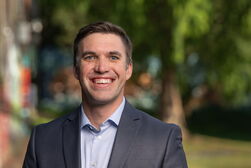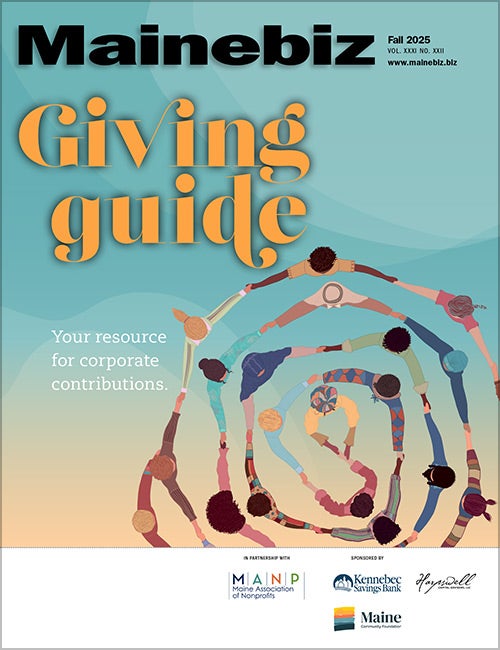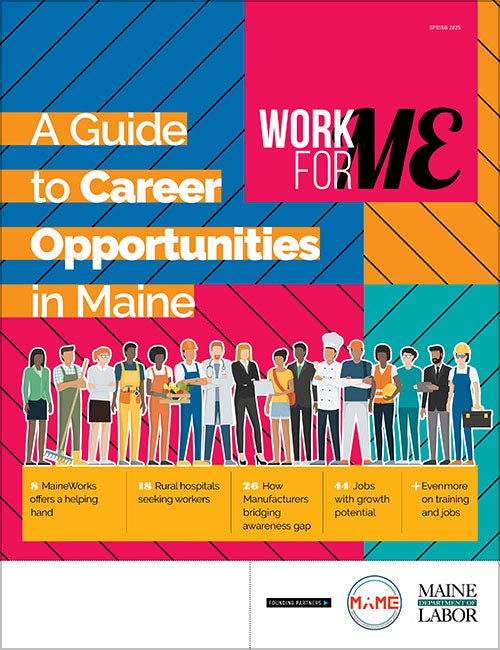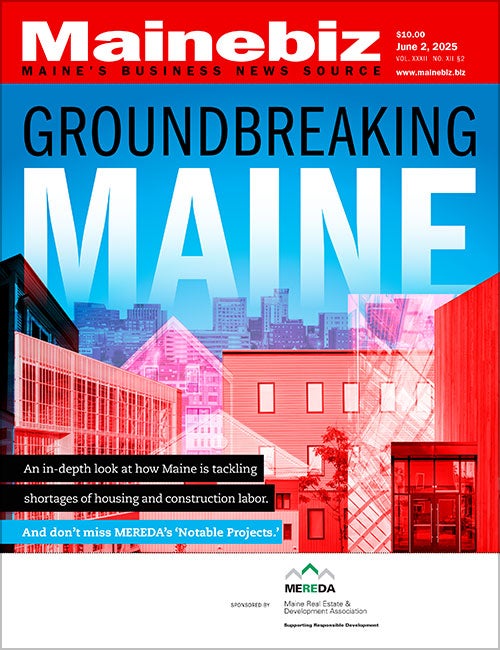
Structuring for success: How one Maine company navigated the ESOP process
While ESOPs are not a new concept, they continue to attract companies across industries and of all sizes.
There are 6,548 ESOPs in the United States, holding more than $1.8 trillion in assets, according to the National Center for Employee Ownership, a nonprofit membership organization based in Oakland, Calif. The plans represent a significant share of the labor market, with 14.9 million participants, including 10.8 million active employees working at ESOP companies.
Although becoming employee-owned offers many advantages, experts caution that it is not a cure-all.
A company with a strong foundation is more likely to thrive under an ESOP structure, while a business already struggling without internal supports will continue to face challenges even after the transition. As a result, careful due diligence and the guidance of trusted advisors are essential as companies navigate the shift to employee ownership.
The power of preparation

While ESOPs are applicable for almost any business, they are often selected by family businesses in which the next generation of the company cannot, or does not want to, continue running the company. In order to preserve the company culture and their commitment to their long-term employees, they opt for an employee-owned structure.
The number of employees, preferably at least 20, and company earnings are the first two factors that are evaluated during an initial ESOP assessment, according to Laura Pfeiffenberger, senior vice president and ESOP client advisor at Spinnaker Trust.
“ESOPs range in all different sizes,” Pfeiffenberger says. “You have fairly large companies that might have operations across the U.S., and you have smaller mom-and-pop operations. For companies that are on the smaller side, if they are set on doing the ESOP because they think it’s the right thing to do, they can do it. Nobody is going to say this isn’t a good idea for you, but we will lay out the transaction costs.”
She says part of the job of an ESOP advisor is to have a detailed conversation about what’s ahead.
“I think part of our discussion with prospective ESOP companies is to explain to them not only what an ESOP transaction entails, but that there’s a lot that gets done after the transaction on an annual basis,” Pfeiffenberger says.
During the transaction process, when a company negotiates its sale to its employees, advisors such as Spinnaker help streamline the process. Although collaborative, it is also a true negotiation, with a term sheet moving back and forth between the represented parties, Pfeiffenberger explains. As the firm representing the participants of the trust being established, Spinnaker plays a key role in ensuring fairness throughout the deal.
Once both sides reach an agreement, the transaction closes. However, that is not the end. ESOPs are subject to annual reporting to ensure compliance, which is when Spinnaker is often engaged as an external trustee. Because of these ongoing responsibilities, Pfeiffenberger advises companies to seek out trusted advisors and involve them early in the process.
Unlike typical acquisitions and mergers, Pfeiffenberger finds the ESOP transition to be a more collaborative structure based on mutual success.
“I think the ESOP transaction space is a bit different because underlying all of the negotiations is the simple fact that both sides are going to be involved with the company after the transaction, and so neither side wants to set the other up for failure,” she says.
Succession in action
Zachau Construction in Freeport is an example of a successful transition from family-owned business to 100% employee-owned. The 56-year-old construction management company announced the change in May.
Zachau ranks No. 6 among Maine’s largest construction firms, with 50 employees and $96 million in revenue, according to the 2025 Mainebiz Book of Lists.
Construction is one of the leading industries turning to ESOPs, with 16% of all plans nationwide coming from this sector, highlighting the industry’s reliance on employee ownership as a succession tool, according to the national trade association.
As a client of Spinnaker Trust, Zachau stood out for the preparation and commitment of its CEO, Jeff Zachau. Determined to preserve the legacy of the business his father, Earle Zachau, founded in 1969, Jeff came to the table already well versed in ESOPs.
“His answers were beyond what we typically encounter for somebody who wants to seriously explore becoming an ESOP. He had clearly done his homework, and he was basically already speaking our language,” recalls Pfeiffenberger.
Transparency also defined the process. By engaging employees early, Zachau’s leadership fostered buy in and eased the transition.
“What we found unique about the Zachau Transaction, and our ongoing relationship with them, is the thoughtfulness that Jeff and his management team have, not only for the ESOP process, but for their employees as well,” Pfeiffenberger says. “Their culture is really one that speaks volumes, and it was a great opportunity to be able to see that in action.”
Keeping culture intact

As with all ESOPs, employees gain greater governance, but management structures remain in place, allowing day-to-day operations to continue without disruption. This is exemplified by Jeff Zachau’s continued role as CEO and Drew Wing’s position as Zachau Construction president.
The Zachau team was very intentional with their actions and took three years to do research that strategically aligned their long-term goals with the ESOP process. After identifying the path forward, the actual transition was smooth and efficient.
Unlike some companies, Zachau Construction’s third generation, Charlie Zachau, is actively engaged in the business. “The company was of a size, and the operations were complex enough that we wanted to ensure that we had a core team that could help transition the company, and the ESOP model provided the best opportunity to do that,” explains Wing.
The firm encountered no significant challenges during the transaction, thanks in large part to the preparation they had done beforehand. They also followed the suggestion to inform employees early in the process. Jeff announced the plans during a team meeting, and the employee ownership plan was well received.
“Our advisors suggested sharing our intentions early which aligned with ESOP culture. If we can trust employees with the company then we can trust them with early information,” Wing says about the leadership’s transparency.
Even with such a positive experience, Wing recognizes that transitioning a 56-year-old company was a momentous step for the Zachau family and carried an emotional component.
Zachau’s employees were already a committed workforce before becoming employee owned, but now there is a deeper sense of pride in ownership, Wing says. This shared investment motivates employees and ensures that both the company and the community benefit by keeping jobs local.
Although the ESOP is still new, the company is already setting strategic goals for the future.
While honoring a 56-year history, “we are sure [the future] includes significant growth that is geared towards the needs of our clients while allowing our team to grow. For our team to grow, we need to create more opportunity, meaning we will be taking on bigger and more complex projects,” Wing says.
Since its founding, relationship building has been central to Zachau’s mission, making the ESOP model a natural fit for a company that values culture and is committed to keeping its team intact.
“Some people think that becoming an ESOP can fix your company’s cultural challenges. I do not see an ESOP as a mechanism to do that,” Wing says. “If you have a strong culture, an ESOP can work really well, but it should not be looked at as a solution to cultural challenges; those need to be addressed beforehand. For us, the ESOP structure made our existing culture even stronger.”














0 Comments